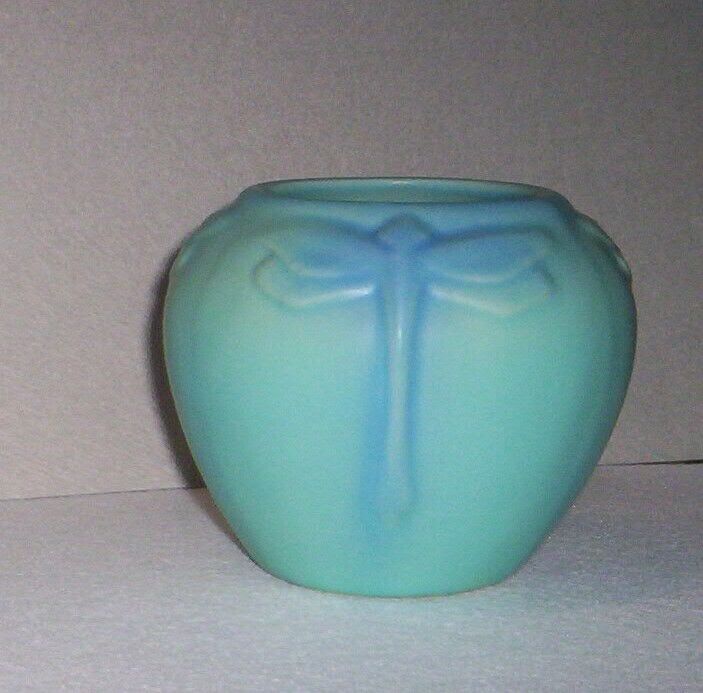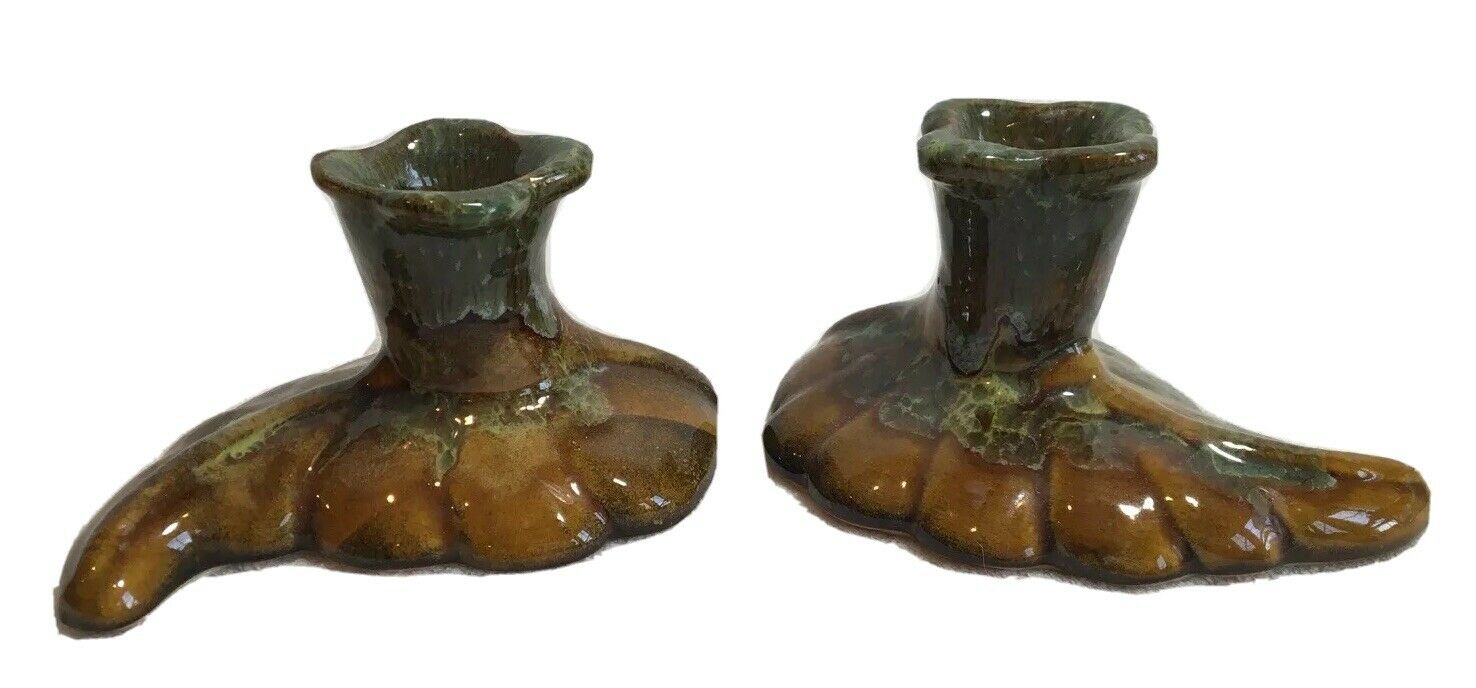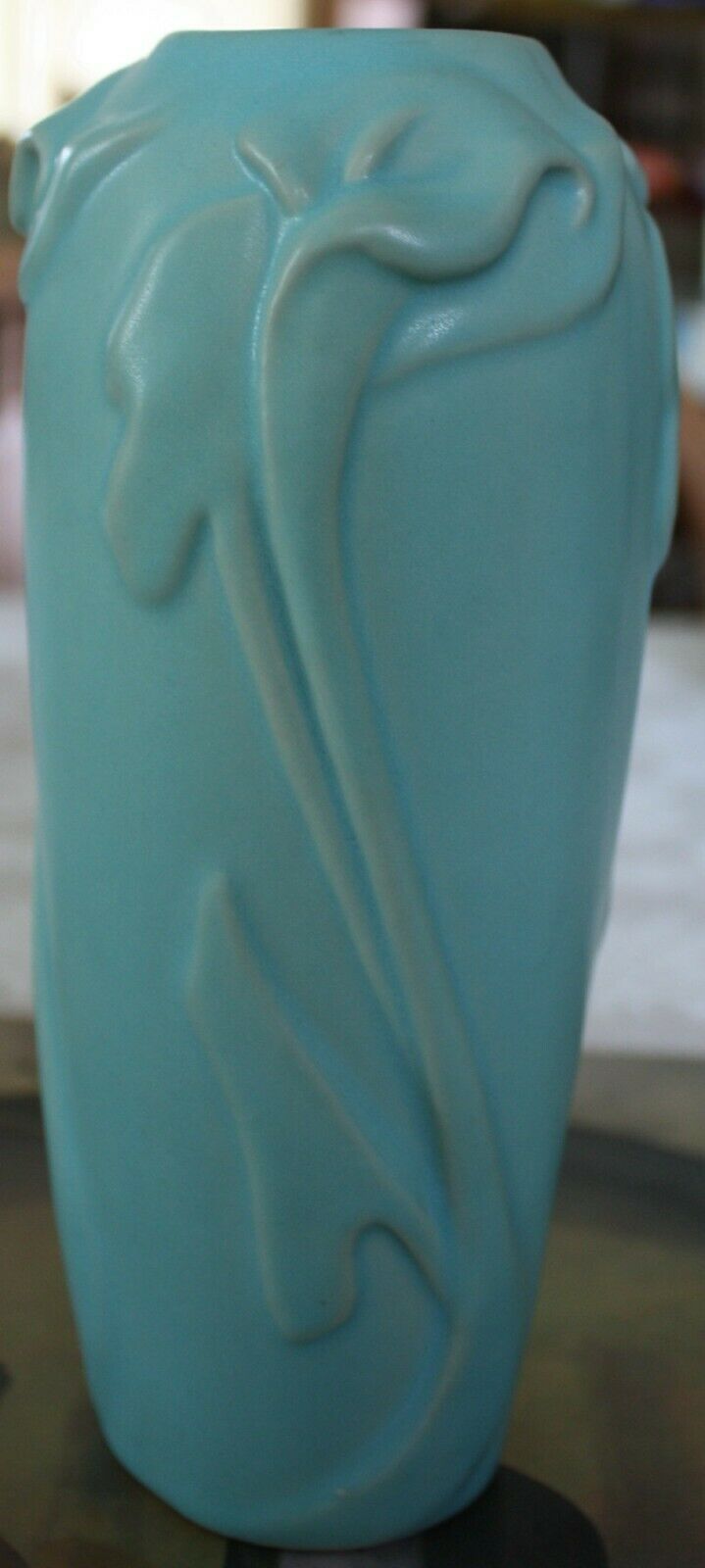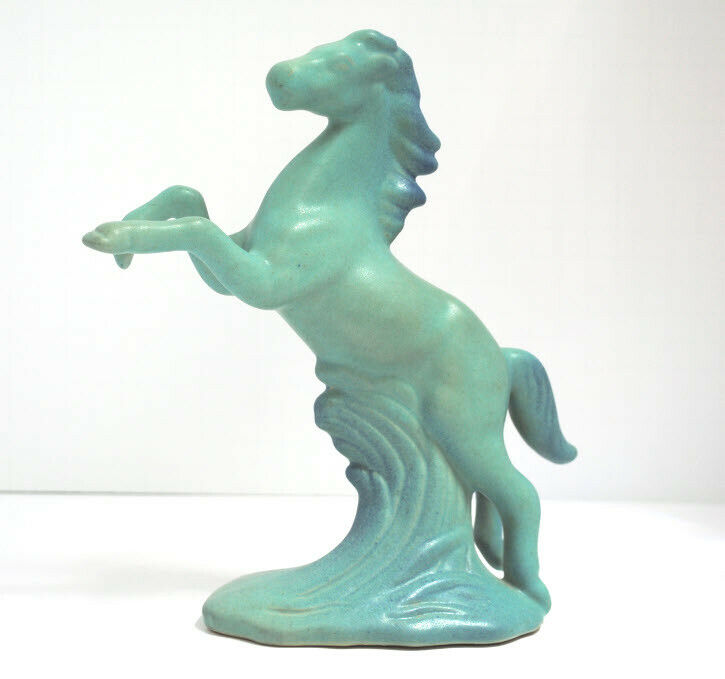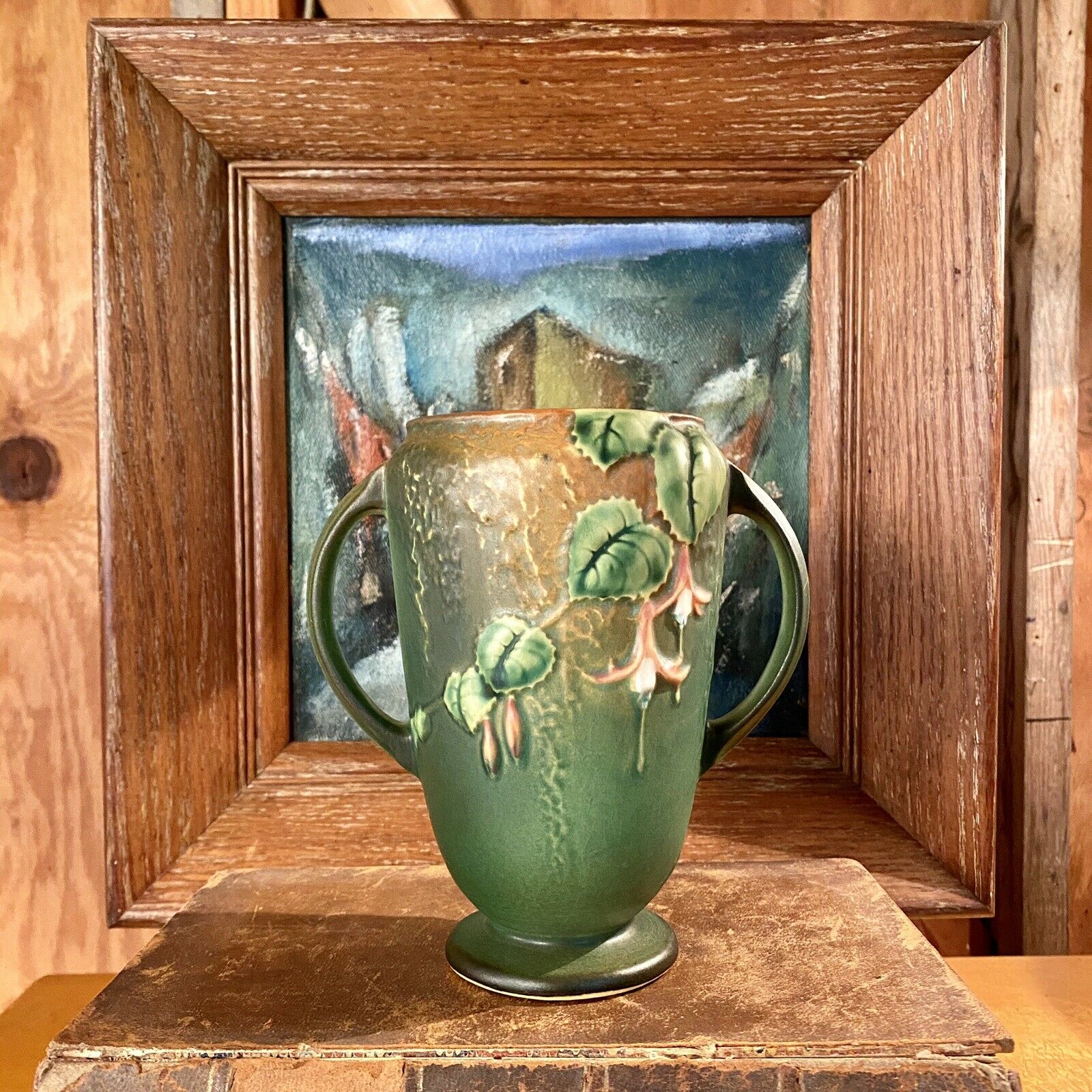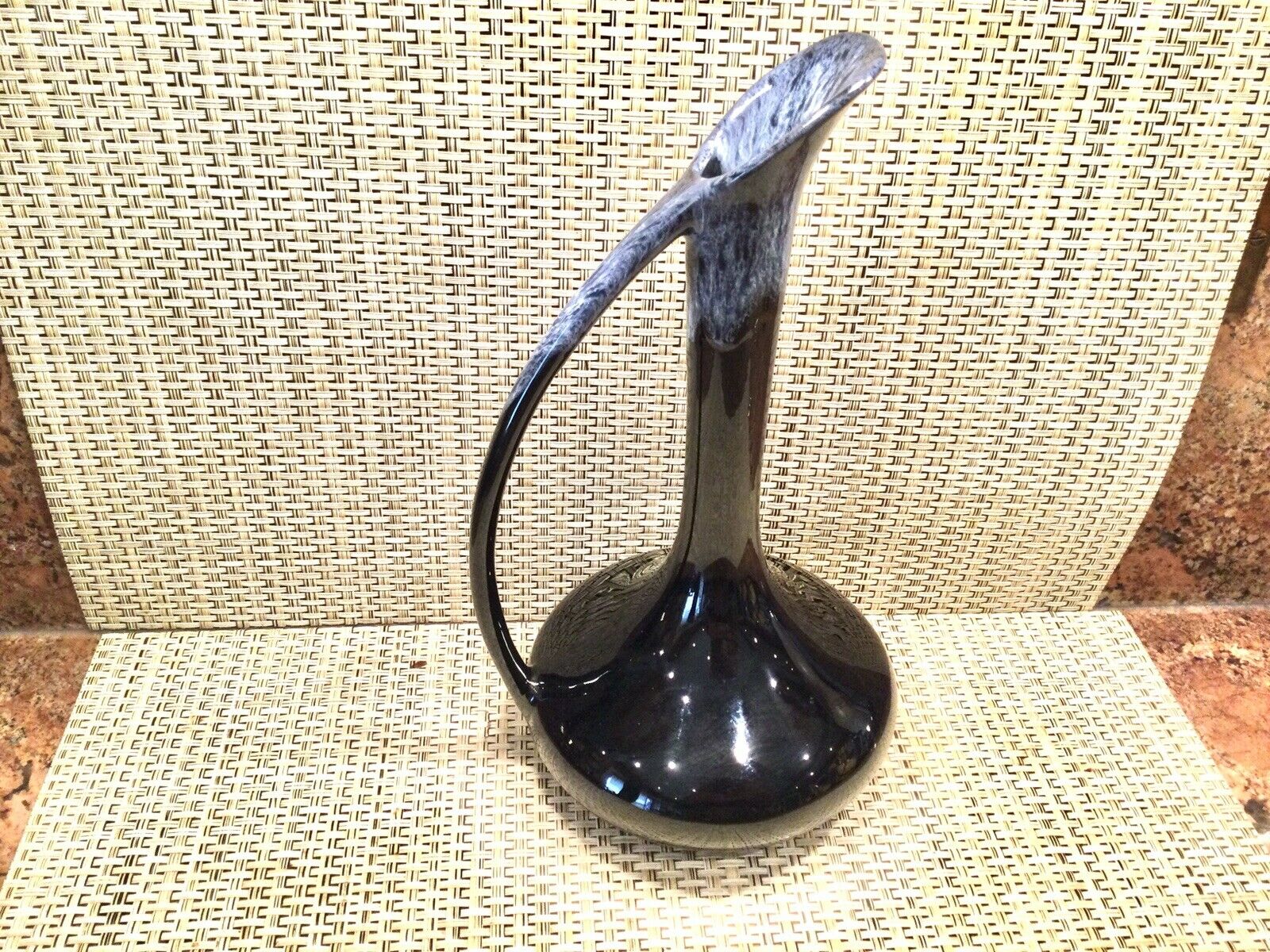-40%
VAN BRIGGLE SIGNED SMALL WHITE BUD VASE
$ 44.88
- Description
- Size Guide
Description
EXCELLENT FORM BUD VASE UIVan Briggle Art Pottery was at the time of its demise the oldest continuously operating art pottery in the United States, having been established in Colorado Springs, Colorado in 1901 by Artus and Anne Van Briggle. Artus had a significant impact on the Art Nouveau movement in the United States, and his pottery is foundational to American Art Pottery.[A] [B] [C][D] [E] [F] [G] The Art Nouveau style favored by its founders continues to influence the pottery's designs.[7][8]
A 1903 vase by Artus Van Briggle, on display at the de Young Museum in San Francisco
Artus Van Briggle settled in Colorado Springs in 1899 after establishing himself as a notable artist with the Rookwood Pottery of Ohio.[9][10] With Anne Louise (née Gregory), his new wife, Artus began exploring the Art Nouveau style in their pottery creations, drawing awards and accolades from the American and European art communities. Although he was a talented painter who had displayed and won awards in Europe, from 1899 until his death Artus devoted himself almost exclusively to the craft and art of pottery.[11][8] Van Briggle's Art Nouveau designs and distinctive matte glazes were awarded high honors from prestigious sources, including the Paris Salon, the Saint Louis Exposition, the Lewis and Clark Centennial Exposition, and the American Arts and Crafts Exhibition in Boston.
Artus Van Briggle in 1900.
Born to artistic parents on March 21, 1869, Artus Van Briggle had an early introduction to painting using materials found about the home. The Van Briggle family lived in Ohio, one of America's hotbeds of ceramic design. At the age of 17 he moved to Cincinnati, Ohio, where he decorated china dolls at the Arnold Fairyland Doll Store, while attending his early art studies at the Cincinnati Art School. After a stint at the Avon Pottery where he was introduced to the ceramic arts, Artus took a job at Rookwood Pottery; there he excelled at hand-painting designs. His skill and talent were recognized by Rookwood founder, Maria Storer, who became his benefactor, even sending him to France to study art at the Académie Julian in Paris.[13]
In Europe, he was exposed to styles of art and became infatuated with an early matte glaze from the Chinese Ming Dynasty; a type that was lost to history. Artus also met his future wife, fellow American student Anne Lawrence Gregory, an accomplished artist in her own right. Finishing their Paris studies in 1896, they returned to America. Artus resumed his work at Rookwood and also started sculpting and experimented with recreating the lost Ming Dynasty glazes.
Matte blue glazed Despondency vase
Perfecting the distinctive dull or matte glaze[edit]
In 1899, struggling with health issues due to tuberculosis, Artus left Rookwood and moved to the drier air of Colorado Springs, Colorado. Upon befriending the Holmes family of Chico Basin, he stayed at the HOP Ranch during the summers of 1899, 1900, and 1901 to reduce work stress and regain strength[14] while pursuing his own styles of pottery, centered around the Art Nouveau movement. He continued his research on the ancient matte glazes that fascinated him in Paris. After two years of trials and experiments a matte glaze was perfected. One of the matte glazes perfected by Artus was the matte blue glaze, based on an ancient Chinese process that had long been lost to history.
Artus opened Van Briggle Pottery in 1901 and was joined by Anne Gregory, who took a position as a high school art teacher in Colorado Springs. In 1903, Artus Van Briggle was appointed First Director of the Department of Art and Design in Colorado College, succeeding Louis Soutter, a Swiss artist (born in Geneva, Switzerland) he met in Paris in 1895.
In 1902, Anne and Artus were married, and she devoted herself to their pottery; she created designs and collaborated in all aspects of the enterprise with her husband. Late 1902 brought Van Briggle awards for his glazes and designs in Art Nouveau from the prestigious Paris Salon; he was now an accepted artist. During their early years, Artus and Ann established hundreds of Art Nouveau styles of pottery under the Van Briggle name. The Despondency vase won Van Briggle wide acclaim and first place at the Paris Salon in 1903. A display at the 1904 Centennial Exhibit in St. Louis won Van Briggle more awards and greater international fame.
Van Briggle Memorial Pottery
Pottery loses its founder[edit]
Artus Van Briggle died in July 1904,[15] at the age of 35. Anne continued the pottery using the forms created by Artus as a foundation and adding more designs of her own. In 1907, Anne and pottery stockholder and city-founder William Jackson Palmer began construction on a new pottery on Uintah Street. The Van Briggle Memorial Pottery — designed by Dutch architect Nicholas Van den Arend — was opened in 1908 and stands today as an historic landmark noted for its architecture and use of ceramics in the facade.
Having remarried in 1908, Anne Louise Gregory Ritter leased the pottery in 1912 to Edmund deForest Curtis, who ran it until 1916.[16] She sold the company in 1922 to J.F. and I.H. Lewis[17] and moved to Denver the following year, where she would concentrate on painting and where she remained until her death in 1929.[18] In her absence, the pottery fell under financial hardships and was sold at sheriff's auction; later it was re-sold, once more becoming the property of Mr. Curtis.









